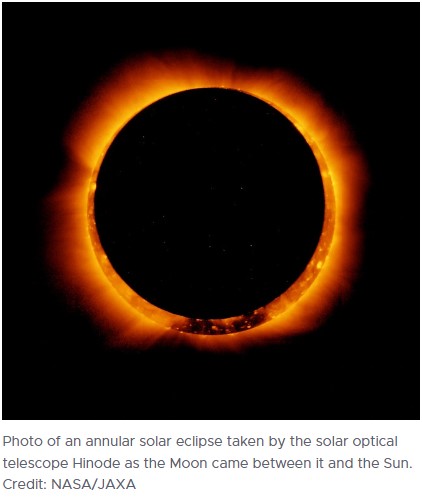By Dave Webb
I’m looking forward to viewing and attempting to photograph the upcoming “ring of fire” solar eclipse. It should be beautiful, unique, and a fun challenge for us camera enthusiasts.
It will happen on Oct. 14, 2023.
In Utah, it will peak at approximately 10:30 a.m. MDT. The sun will be about 30 degrees above the horizon in the southeastern direction.
It will be visible from a narrow swath of Utah that cuts across our west desert and canyon/national park country. Utah places to view the wonder include:
-
West Desert
-
Bryce Canyon
-
Much of Grand Staircase
-
Capitol Reef
-
Much of Lake Powell/Glen Canyon
-
Much of Canyonlands
-
Four Corners area
Moab is too far north and St. George and Zion are too far south.
More accessible areas will draw crowds. Hotels/motels and campgrounds in the path are already selling out. Act ASAP if you want a reservation.
Total eclipses are always fun but this one is more exciting than normal. Because of the size of the moon and its position at this particular time, the moon will not be big enough to completely cover the sun. Light from the sun will be visible all around the moon – a ring of fire surrounding the moon’s darkness.
This website has great background information about the eclipse: https://nationaleclipse.com/overview_2023.html#:~:text=Beyond%20the%20forests%2C%20the%20eclipse,Park%2C%20and%20Canyonlands%20National%20Park.
This one has an interactive map showing the path across the US and South America: http://xjubier.free.fr/en/site_pages/solar_eclipses/ASE_2023_GoogleMapFull.html
Here’s information for photographers: https://www.photopills.com/articles/annular-solar-eclipse-photography-guide
I hope to view and photograph from a spot that includes a dramatic land feature. That is a challenge. Since the sun will be about 30 degrees above the horizon, I’ll need a fairly open view to the southeast. My goal is to have the sun large in the photo, framed by a pinnacle or mountain or something. To accomplish that I’ll need the pinnacle to rise quite high above the horizon and I’ll need to be a considerable distance away. I’ll be scouting and testing before the event. I’m considering:
-
Crystal Peak in the West Desert
-
Red Canyon near Bryce
-
Bryce Canyon
-
Capitol Reef Scenic Drive
-
Burr Trail
-
Temple of the Sun
-
Lake Powell up-lake by boat
-
Mexican Hat
-
Hovenweep
-
Valley of Fire
-
Monument Valley
-
Shiprock
I’m not an expert photographer. Just a serious enthusiast. I’ve been studying and compiling notes. Here are key things I’ve learned.
Do not ever look at the sun without eye protection. Sunglasses are not enough. You need something designed specifically for solar viewing. Google “eclipse glasses” and you will find several inexpensive options.
To photograph the eclipse you need a special solar filter. The sun’s light can damage a camera and even a phone if you do not use the needed filter. A regular ND filter is not dark enough. Needs to be solar-safe and have more than 16 stops.
Sun will be about 30 deg above the horizon, so you need an area with a clear view to the SE.
Use ISO 100
Tight Aperture (f/8)
Set the shutter speed from 1/500s to 1/1000s at f/8 and ISO 100.
The lens choice depends on the photo you want to capture.
Use a wide lens (14-35mm) if you want to include considerable landscape. The sun will be just a small dot in your photo.
Use a long lens (200-500mm) for a close-up view of the sun and to create a powerful image of the eclipse aligned with a particular subject.

